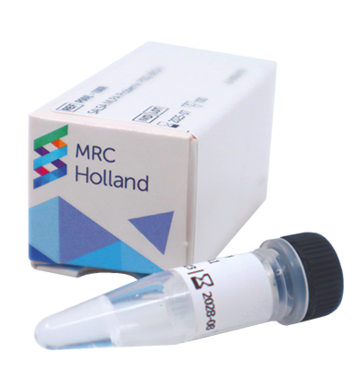P179 Limb malformations-1

SALSA MLPA Probemix P179 Limb malformations-1 detects copy number variations in the GLI3, HOXD13 and ROR2 genes.

Contents: 43 MLPA probes, including 21 probes for GLI3 (covering all exons), 2 probes for HOXD13, and 10 probes for ROR2 (covering all exons).

Tissue: human genomic DNA.

Application: research on limb malformations, including Greig cephalopolysyndactyly syndrome (GCPS), Pallister-Hall syndrome and Robinow syndrome.

For research use only (RUO). Not for use in diagnostics.
